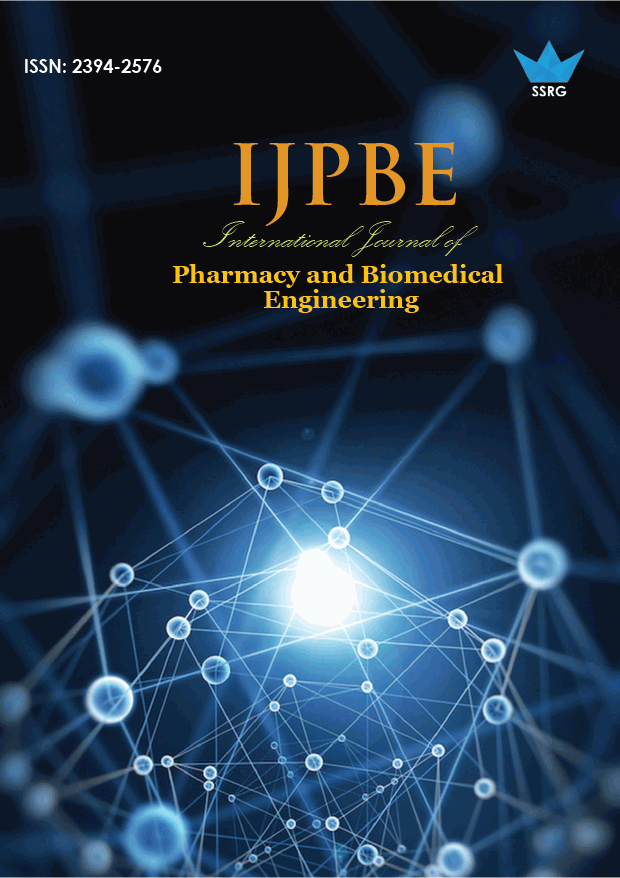An electronic gadget to control wheelchair motion using tongue gesture

| International Journal of Pharmacy and Biomedical Engineering |
| © 2017 by SSRG - IJPBE Journal |
| Volume 4 Issue 1 |
| Year of Publication : 2017 |
| Authors : K.S.Abbirame, A.S.Haripriya, V.Aravind and G.Jamuna |
How to Cite?
K.S.Abbirame, A.S.Haripriya, V.Aravind and G.Jamuna, "An electronic gadget to control wheelchair motion using tongue gesture," SSRG International Journal of Pharmacy and Biomedical Engineering, vol. 4, no. 1, pp. 1-3, 2017. Crossref, https://doi.org/10.14445/23942576/IJPBE-V4I1P101
Abstract:
Tongue drive system (TDS) is a tongue operated unobtrusive assistive technology, which can potentially provide people with severe disabilities with effective access and environment control. It translate user’s intentions into control commands by detecting and classifying their voluntary tongue motion utilizing a small permanent magnet, secured on the tongue and an array of magnetic sensors mounted on the mouth the magnetic sensor are nothing but hall effect sensors. a hall effect sensor is a transducer that varies its output voltage in response to changes in magnetic field .in its simplest form the sensor operates as an analogue transducer, directly returning a voltage. With a known magnetic field, its distance from the hall plate can be determined. Wheel chair is made up of high torque geared DC motors, the motors direction can be changed through the set of instructions given from the hall effect sensor and the action of these instructions is already loaded into the microcontroller using embedded C programming. Complete system proposed in this paper has been designed around PIC microcontroller and a RF module. The design has been tested and result achieved confirms the design approach illustrated.
Keywords:
Permanent magnet, Hall Effect sensor, DC motor, microcontroller.
References:
[1] Gautham Krishnamurthy et al proposed Tongue drive: “A tongue drive operated magnetic sensor based wireless assistive technology for people with severe disabilities in 2006” in International journal of bio sciences.
[2] Preetham et al “proposed the Microcontroller based tongue drive system for physically challenged people approach in 2013” in international journal of artificial intelligence.
[3] Monika Jain in the year 2014 “proposed tongue operated wheelchair for physically disabled people” in the International journal of latest trends in Engineering and Technology.
[4] Abbas et al “proposed the design and implementation of advancement wireless tongue drive/operated system for paralyzed disabled and quadriplegic patients in 2016” in journal of Bioengineering & Biomedical science.
[5] Amrita Mahadev Chavan et al in the year 2016 “proposed wheel chair operated by tongue motion” in the International Journal Of Advanced Research in Electronics And Communication Engineering.
[6] Onur Kocak et al in the year 2016 “proposed Control Of Wheelchair for Quadriplegia Patients”:Design a Bioremote Control in the International Journal of Life Sciences.
[7] Agnes Ghorbel et al in the year 2015 “proposed interface and may to implant it on a embedded system architecture based on ARM processor rather than personal computer”.
[8] Mohammed Hayyan et al in the year 2015 “proposed smart wheelchair system to help people with server disabilities paralysis”.
[9] Tanya Law is et al in the year 2010 “proposed the tongue controlled wheelchair for paralyzed people move that help people affected by tetraplegia to use tongue effectively by means of tongue drive system to steer a wheelchair through on obstacle course or operate a computer”.
[10] Akira Murai et al in the year 2009 “proposed a new functional vocable smart wheelchair. The system used commercial powered wheelchair grammar based voice identification system and laptop with six peripheral interface controller(PIC)”.
[11] Vishal et al in the year 2014 “proposed the concept of controlling and moving the wheelchair using hand gesture in his paper by using MEMS tech”.
[12] Shafaque Anjum Mohd Shakir Sheikh in the year 2015 “proposed smart wheelchair system in their review paper”. The wheelchair used commonly is not used instead Robo model wheelchair is desired and implemented.
[13] Geethu Suresh et al in the year 2016 “proposed brain computer interface(BCI) to communicate between the human brain and digital signal process.”
[14] Snehlata Yadav et al in the year 2016 “proposed a review on smart wheelchair and it uses”.
[15] Amberlay Ruiz et al in the year 2013 “proposed the development of a magnetic control system for an electric wheelchair using the tongue.”
[16] Ericka Janet et al in the year 2011 proposed Head Movement based control of intelligent wheelchair in an indoor environment.
[17] Padmalatha et al in the year 2011 “proposed Tongue Drive System to operate computers” - A New Tongue operated Assistive Technology.
[18] Huo et al in the year 2008 “proposed A magnetic wireless tongue computer interface”.
[19] Wolfgana et al in the year 1998 “proposed Tongue mouse quadriplegics”.
[20] Salem et al in the year 1997 “proposed An isometric tongue pointing devices.”

 10.14445/23942576/IJPBE-V4I1P101
10.14445/23942576/IJPBE-V4I1P101